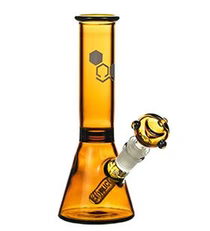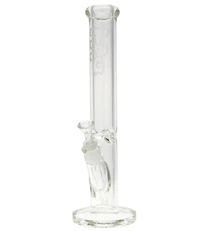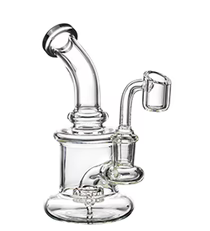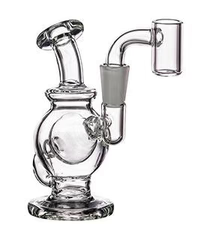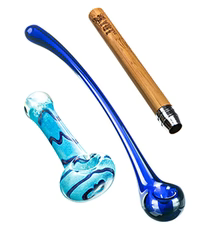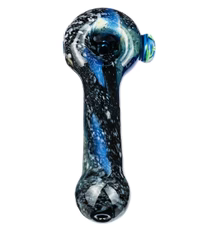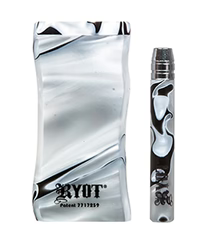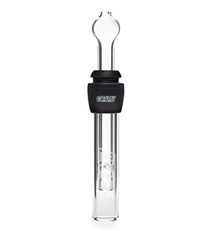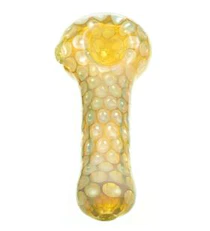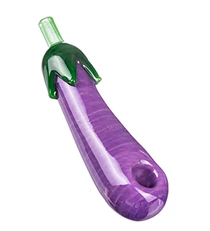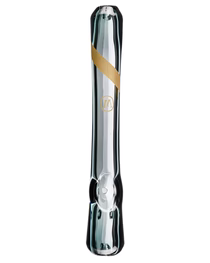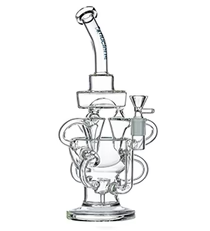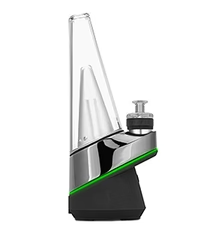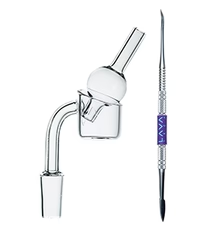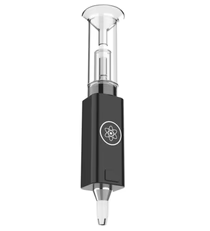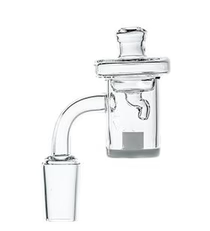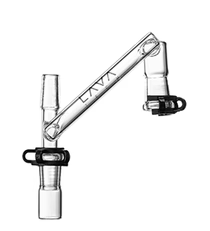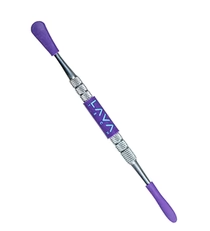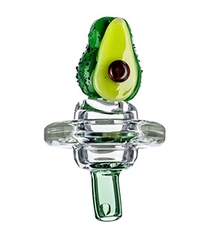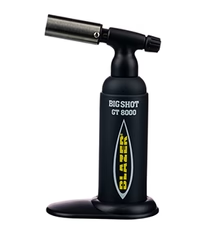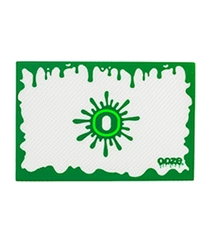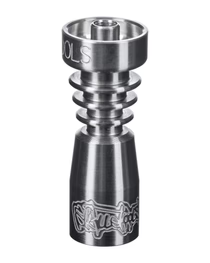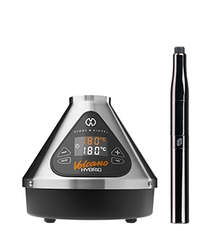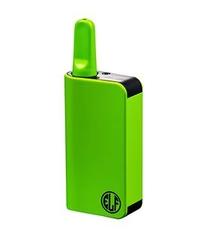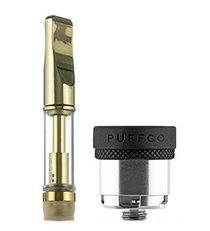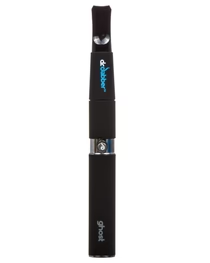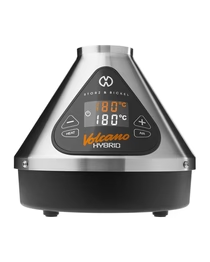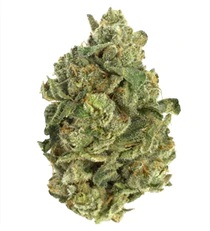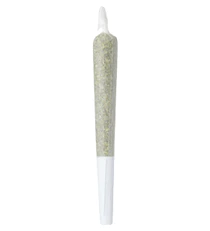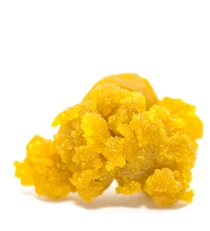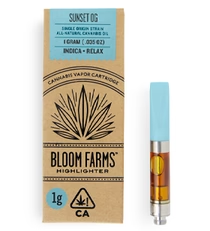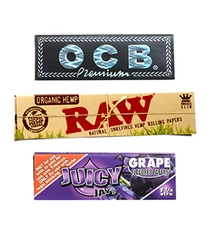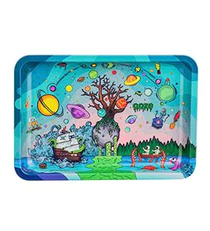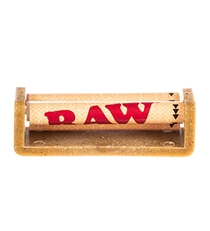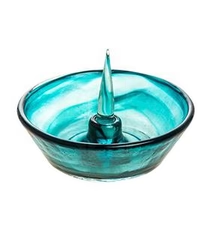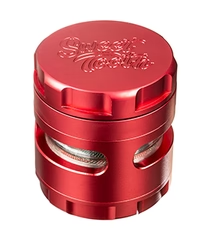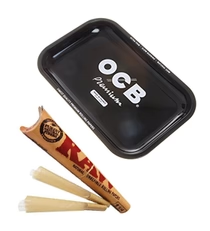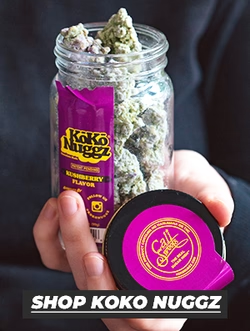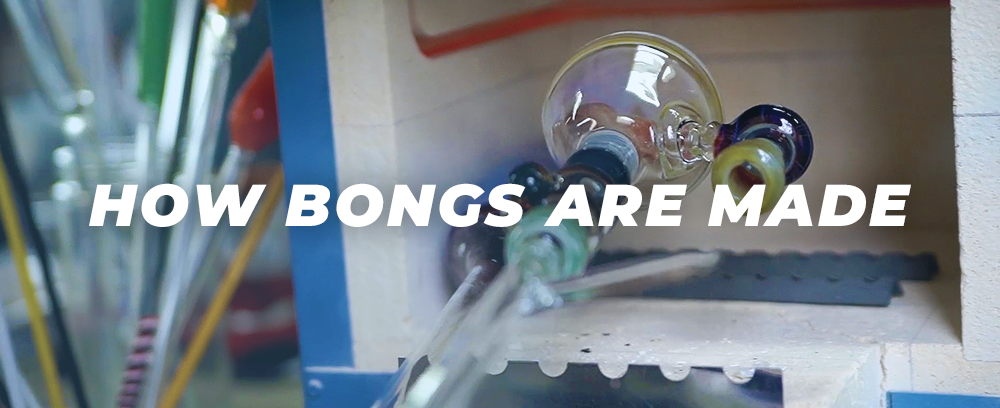
More and more, smokers are beginning to take an interest as to the origins of their pieces. There’s nothing more mesmerizing than seeing a master glassblower create a beautiful, big bong out of a series of small glass tubes. The artistry and skill required is simply undeniable.
It takes both skill and the right set of materials to make a glass bong. Most often these pieces are made in professional glassblowing studios by experienced hands. The range of bong designs vary from the simplest straight tube bong to the most artistic, percolator-included beaker bong and as such making a water pipe can be extremely complex.
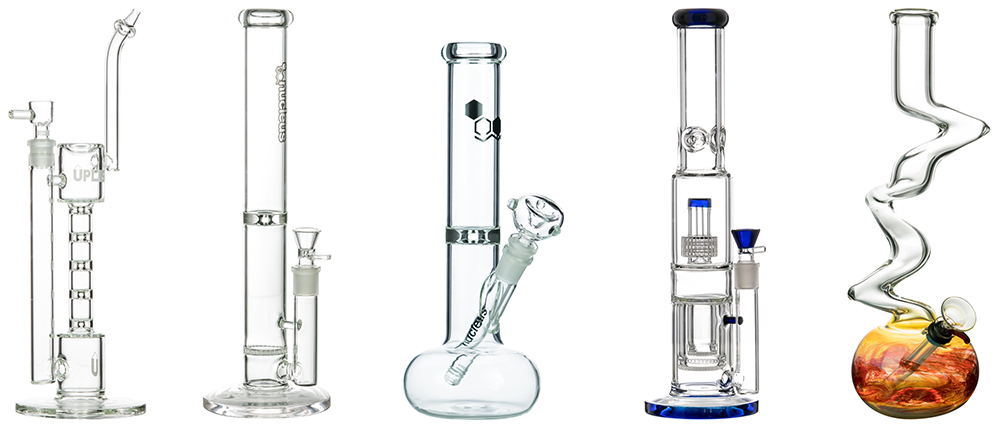
Fundamentally the practices of glassblowing remain consistent across the board regardless of the bong design. Understanding the basics of how a glass bong is made can give you a good idea of how even the most complicated designs come about.
The Process of Making a Standard Glass Bong
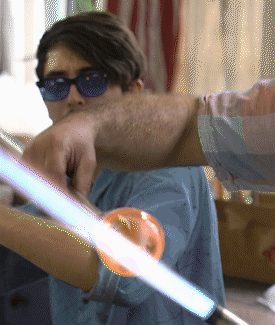 Using a large, industrial torch and a stone block, glassmakers generally start making their pieces by focusing on the bulbous base. The glassmaker begins by taking a straight glass tube and heating it up until it balloons in the center to form a big, hollow bubble. This is removed from the flame and then, using glassblowing techniques and holding either end of the glass tube, inflated to a larger size. Consistency is crucial when it comes to making bongs, so some glassblowers will use a set of rollers to evenly rotate the piece and ensure that the body of the piece sits correctly and the base stays even as it becomes rounded and blown out.
Using a large, industrial torch and a stone block, glassmakers generally start making their pieces by focusing on the bulbous base. The glassmaker begins by taking a straight glass tube and heating it up until it balloons in the center to form a big, hollow bubble. This is removed from the flame and then, using glassblowing techniques and holding either end of the glass tube, inflated to a larger size. Consistency is crucial when it comes to making bongs, so some glassblowers will use a set of rollers to evenly rotate the piece and ensure that the body of the piece sits correctly and the base stays even as it becomes rounded and blown out.
Be Strong in Body, Clean in Mind, Lofty in Ideals – James Naismith
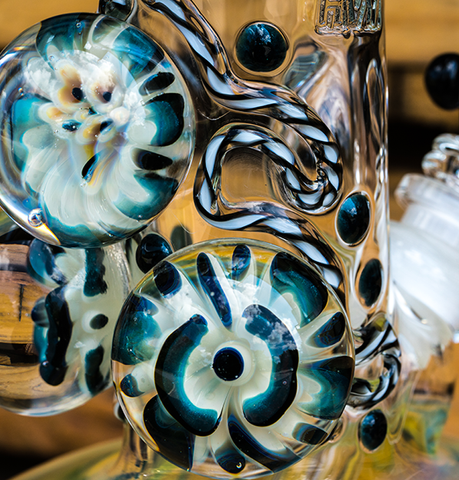 Next up comes the creation of the tubing. This is the point where style is really taken into consideration; any design elements in the neck/body—notches, swirls, whatever—are put in at this point. The form can be twisted and thinned out as needed to create tubes that stray from the standard designs. To make the figure, glassmakers will oftentimes use a separate piece of glass, either a new tube or a piece pulled from the glass that was used to make the base. The latter is common because it’s easy to ensure consistent size between the opening of the base and that of the neck once they’re inevitably rejoined at the end of the bong-making process.
Next up comes the creation of the tubing. This is the point where style is really taken into consideration; any design elements in the neck/body—notches, swirls, whatever—are put in at this point. The form can be twisted and thinned out as needed to create tubes that stray from the standard designs. To make the figure, glassmakers will oftentimes use a separate piece of glass, either a new tube or a piece pulled from the glass that was used to make the base. The latter is common because it’s easy to ensure consistent size between the opening of the base and that of the neck once they’re inevitably rejoined at the end of the bong-making process.
Percs are Perks
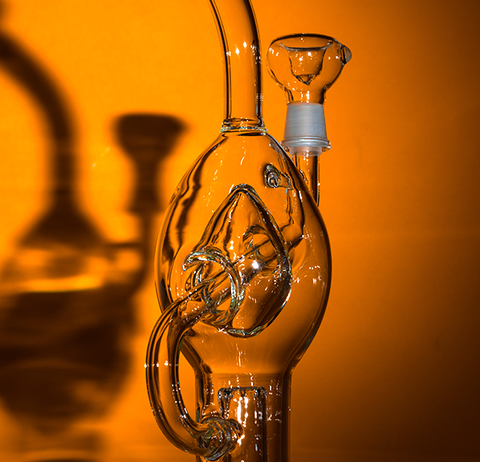 Internal percolators, filters inside the bong, can also be made from the same piece of glass as the body. This helps to keep the percolator a similar size to the tube that it will eventually be placed in and lessens the need for sizing guesswork. This is the part where some glassblowers really showcase their skills, creating intricate internal structures for the smoke to filter and cool through. These percolators are put inside the body and/or neck and then glass is welded to it using a torch. Any extra glass is pulled off in order to ensure that the product is smooth and even once it’s all put together.
Internal percolators, filters inside the bong, can also be made from the same piece of glass as the body. This helps to keep the percolator a similar size to the tube that it will eventually be placed in and lessens the need for sizing guesswork. This is the part where some glassblowers really showcase their skills, creating intricate internal structures for the smoke to filter and cool through. These percolators are put inside the body and/or neck and then glass is welded to it using a torch. Any extra glass is pulled off in order to ensure that the product is smooth and even once it’s all put together.
Reattaching the Neck
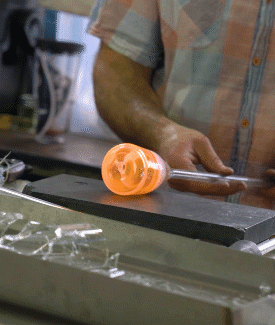 The neck is then reattached to the base if necessary by using a spinning machine (known as a lathe) that keeps the glass pieces steady and even as they are heated and joined. In order to make the bottom of the bong flat, some glassblowers use a lapping wheel, which rotates a water-lubricated abrasive wheel (often coated with diamonds) that flattens the glass.
The neck is then reattached to the base if necessary by using a spinning machine (known as a lathe) that keeps the glass pieces steady and even as they are heated and joined. In order to make the bottom of the bong flat, some glassblowers use a lapping wheel, which rotates a water-lubricated abrasive wheel (often coated with diamonds) that flattens the glass.
After the whole process is finished the piece is put into an annealer, which helps to remove the heat stress put on the glass during the blowing process. Bongs that aren’t properly annealed are likely to break under the pressure of even small temperature changes, which is obviously something that bong makers and consumers alike would want to avoid.
How Are Scientific Bongs Made?
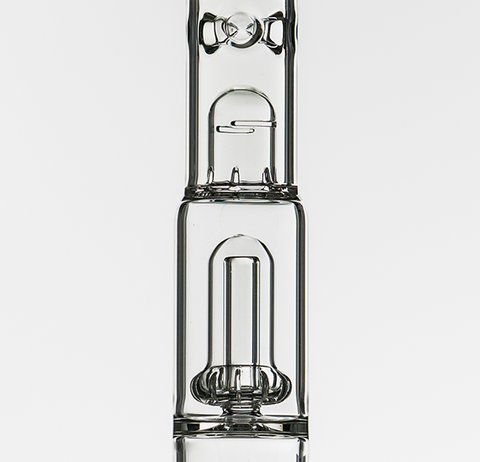 The process of making a scientific bong is fundamentally the same as a hand-spun one, although the elements are crafted in advance to different, more exacting, specifications. Scientific bongs rely more heavily on lathes, as opposed to the hand-spinning employed by glassblowers whose work is a little looser and more organic looking. In general the setups for scientific bongs are larger and more industrial, focused more on welding than shaping the pieces themselves.
The process of making a scientific bong is fundamentally the same as a hand-spun one, although the elements are crafted in advance to different, more exacting, specifications. Scientific bongs rely more heavily on lathes, as opposed to the hand-spinning employed by glassblowers whose work is a little looser and more organic looking. In general the setups for scientific bongs are larger and more industrial, focused more on welding than shaping the pieces themselves.
Scientific bongs are also most commonly made of borosilicate glass, the same material used for Pyrex dishes, since it is able to withstand high heat. Unlike what’s known as a soft-glass studio, borosilicate studios (though they look way more intense) are actually cheaper to set up, requiring only a blowtorch, oxygen, propane and a tabletop kiln—all up around a $1,000 setup.
Conclusion
That said, don’t go running out to convert your garage into a studio—you still need training and experience to make your own pieces. So if you’re interested, the best thing to do is start with classes and learn from the experts. Or, you know, just buy a bong.
Now that you know how a bong is made, compare the similarities in the process of making a dab rig!

